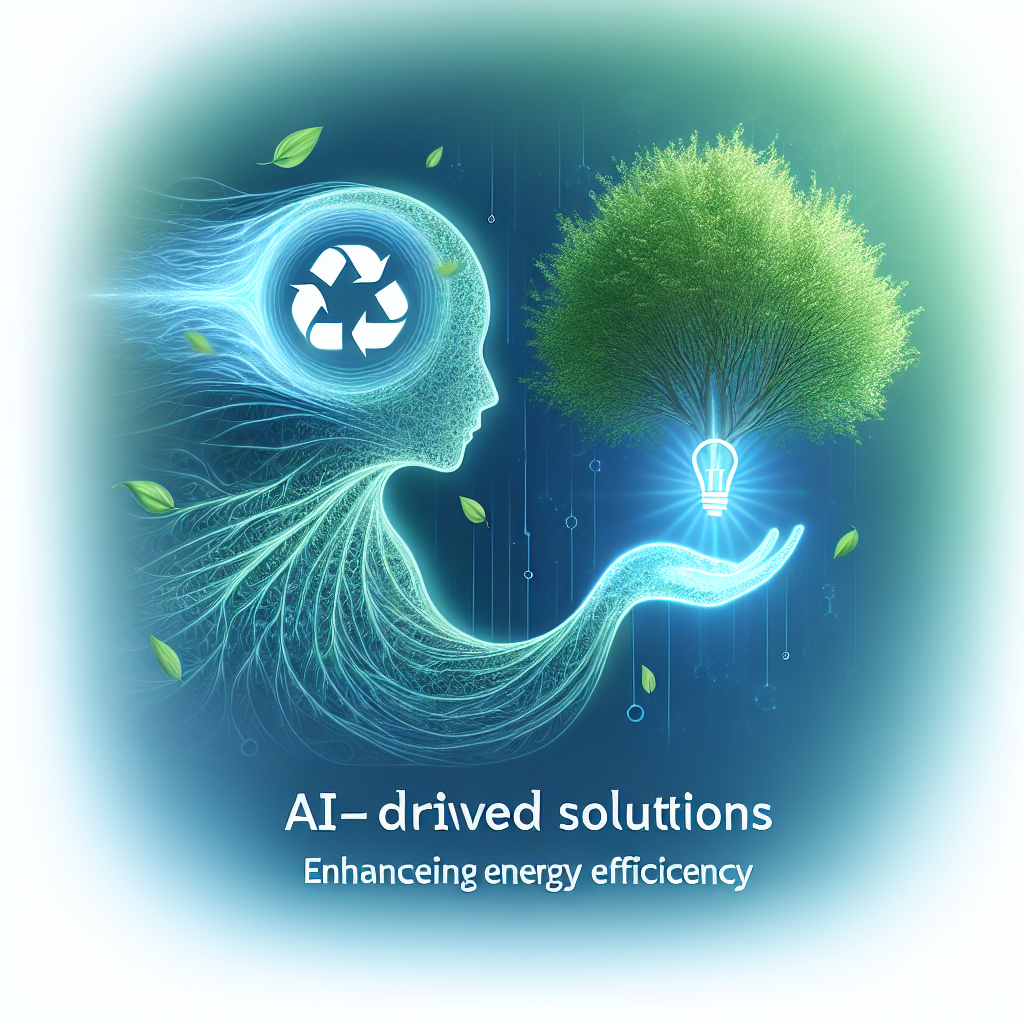In today’s world, energy efficiency is more important than ever. With the increasing demand for electricity and the growing concerns about climate change, finding ways to reduce energy consumption and improve efficiency is crucial. One way that companies and individuals are achieving this is through the use of artificial intelligence (AI) driven solutions.
AI-driven solutions are revolutionizing the way we manage and optimize energy use. By using AI algorithms, organizations can analyze and interpret large amounts of data in real-time to make informed decisions about energy consumption. This allows for more efficient use of resources, lower energy costs, and a reduced carbon footprint.
One of the key benefits of AI-driven solutions is their ability to predict and optimize energy usage. By analyzing historical data, AI algorithms can identify patterns and trends in energy consumption, allowing organizations to forecast future energy needs and adjust accordingly. This predictive capability can help companies reduce waste and save money by optimizing their energy use.
AI-driven solutions can also help identify areas of inefficiency within a system. By analyzing data from sensors and other sources, AI algorithms can pinpoint where energy is being wasted and suggest ways to improve efficiency. This can lead to significant cost savings for organizations, as well as a more sustainable energy footprint.
Another key advantage of AI-driven solutions is their ability to automate energy management tasks. By using AI algorithms to control and optimize energy use, organizations can reduce the need for manual intervention and streamline their operations. This can lead to increased productivity, reduced costs, and improved energy efficiency.
Overall, AI-driven solutions offer a powerful tool for enhancing energy efficiency in today’s world. By leveraging the power of AI algorithms, organizations can optimize their energy use, reduce waste, and lower costs. This not only benefits the bottom line but also helps to protect the environment by reducing carbon emissions.
FAQs:
1. How does AI help improve energy efficiency?
AI helps improve energy efficiency by analyzing large amounts of data in real-time to identify patterns and trends in energy consumption. This allows organizations to make informed decisions about energy use and optimize their operations for maximum efficiency.
2. What are some examples of AI-driven solutions for energy efficiency?
Some examples of AI-driven solutions for energy efficiency include smart thermostats, energy management systems, and predictive maintenance tools. These solutions use AI algorithms to analyze data and optimize energy use in buildings, factories, and other facilities.
3. How can AI-driven solutions help reduce energy costs?
AI-driven solutions can help reduce energy costs by identifying areas of inefficiency and waste in a system. By optimizing energy use and reducing waste, organizations can save money on energy bills and lower their overall operating costs.
4. Are AI-driven solutions scalable for different types of businesses?
Yes, AI-driven solutions are scalable for businesses of all sizes and industries. Whether you’re a small startup or a large corporation, AI-driven solutions can be customized to meet your specific energy efficiency needs.
5. What are the environmental benefits of using AI-driven solutions for energy efficiency?
By reducing energy consumption and waste, AI-driven solutions help lower carbon emissions and reduce the environmental impact of energy use. This can help organizations meet sustainability goals and contribute to a healthier planet.
In conclusion, AI-driven solutions offer a powerful tool for enhancing energy efficiency in today’s world. By leveraging the power of AI algorithms, organizations can optimize their energy use, reduce waste, and lower costs. This not only benefits the bottom line but also helps to protect the environment by reducing carbon emissions. By adopting AI-driven solutions for energy efficiency, businesses and individuals can make a positive impact on the planet while also improving their bottom line.

